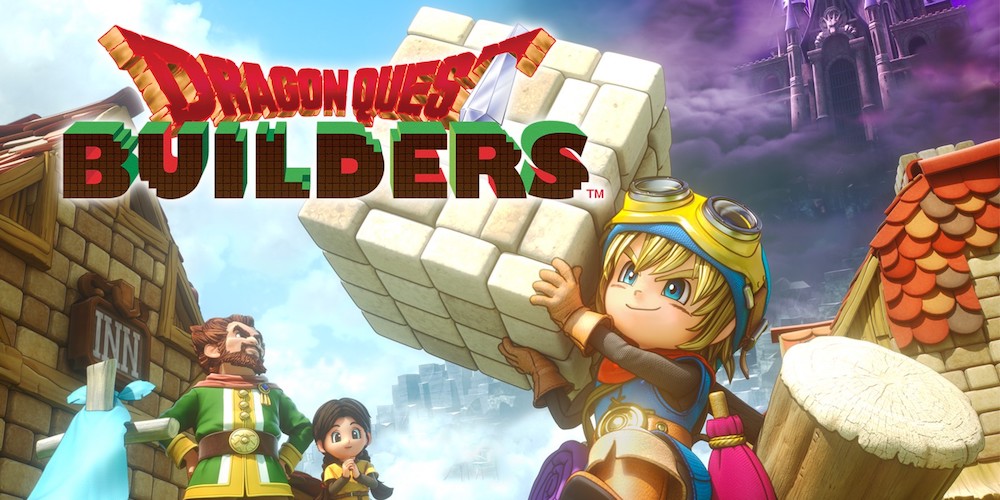
First released in 2016 for PS4 and PS Vita, Dragon Quest Builders (DQB) has made its way onto the Switch. Mind you, it’s mostly the same game as before, just with some fluff added, but it’s also the first time I’ve played it. Let me be honest, though. I initially passed on DQB because it looked like a cute version of Minecraft with characters I wasn’t interested in. Like most parents whose offspring worship Minecraft, I can’t stand the game and avoid any like it. So, with no prior knowledge and only a hint of prejudice, I delved into my first-ever game in the Dragon Quest franchise… And finally got around to writing this review after pulling myself away from 50+ hours of gameplay in just a few weeks.
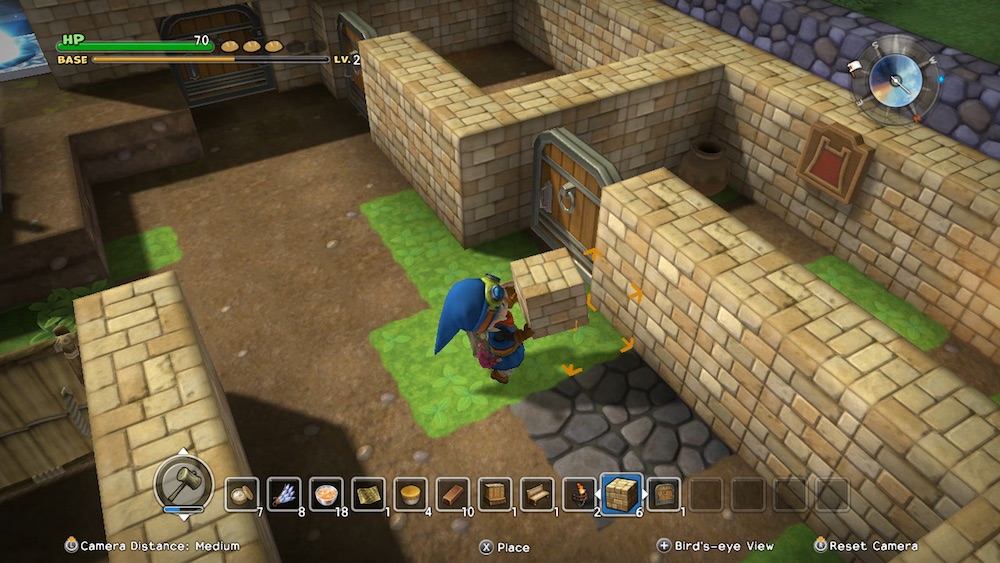
One of the most pleasantly surprising factors of DQB is its narrative, which is something I’ve come to expect little from in building/crafting games. I had no history with the franchise, so when I started my game, it was all brand new for me. At first, it seemed like it would be a light and breezy story, maybe aimed more at children, and the interactions and jokes through the first chapter had me believing that. However, when I look back on those early hours now, it’s clear I was merely being eased into what would eventually develop into a foreboding and somewhat desperate tale. Well, with the exception of the bosses, that is. You’ll likely be unprepared for the first one, and it will probably crush you. There are several in the game, and each is different, fun and satisfying in its own weird way.
The story itself in DQB is broken into four parts, which helps to highlight the dire circumstances of each character group you’ll encounter and what they’ve been through to get to that point. I plodded through chapter one thinking it was all rather cute while helping out all of the NPCs as they asked. However, the more I explored and spent time speaking to people, and as the chapter-specific story unfolded, the more I grew attached to them. I knew the chapter would finish after the boss fight I’d been preparing for, and I wasn’t looking forward to having to get used to a whole new set of people I probably wouldn’t like. Fortunately, the next group were great, too, but leaving the first behind was still a bittersweet moment for me, so before I continued on, I spent another hour or so making their little home as best I could. It didn’t contribute anything to the game progression, but I felt compelled to do it all the same.
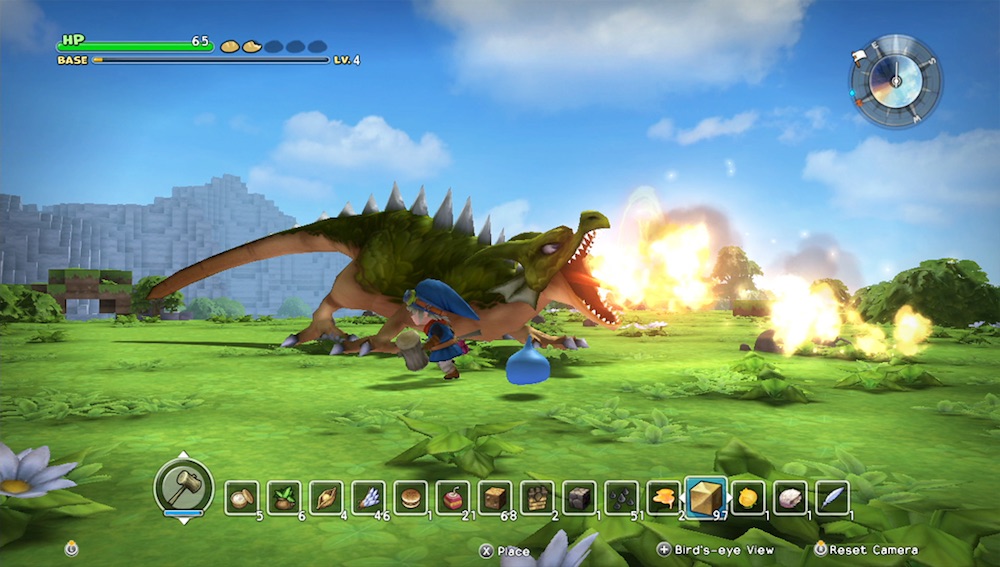
Each of the first three chapters follows the same recipe. Basically, there’s a desolate, abandoned slum in a monster-infested world, and you will meet and work with a single character to slowly build up. After a certain amount of fights, new people and new islands will become accessible, and it keeps rolling on. This approach could have grown stale quickly, but it all depends on how you play the game. You can efficiently manage the story if you fulfil the requirements and simply move on, but there is so much to explore, and it’s always rewarded. Granted, sometimes the reward for killing a beast 20 times your size is a plush couch – but, hey, it looks awesome in my jazz wine-bar, so it was absolutely worth it. Uncraftable weapon items, furniture or magic trinkets also make the fights that bit easier or your build that bit more personalised. There are hidden rewards, too.
It wasn’t until the end of the first chapter that I had my score totalled, which takes into account items crafted, recipes learned, number of deaths, and the days needed to complete it. There were also secret tasks listed – almost all of which I’d accidentally achieved because of the way I play – and, as a reward, this unlocked items, abilities and islands in a special free-play mode called Terra Incognita. It hadn’t yet occurred to me then that there would be a free-play map somewhere, only because I had all the freedom I wanted while building along with the story, so I didn’t even investigate it until I finished the main story. It is worth noting that the secret tasks do get more difficult as you progress, and while I didn’t have to, I found it entertaining going back afterwards to find what I had missed.
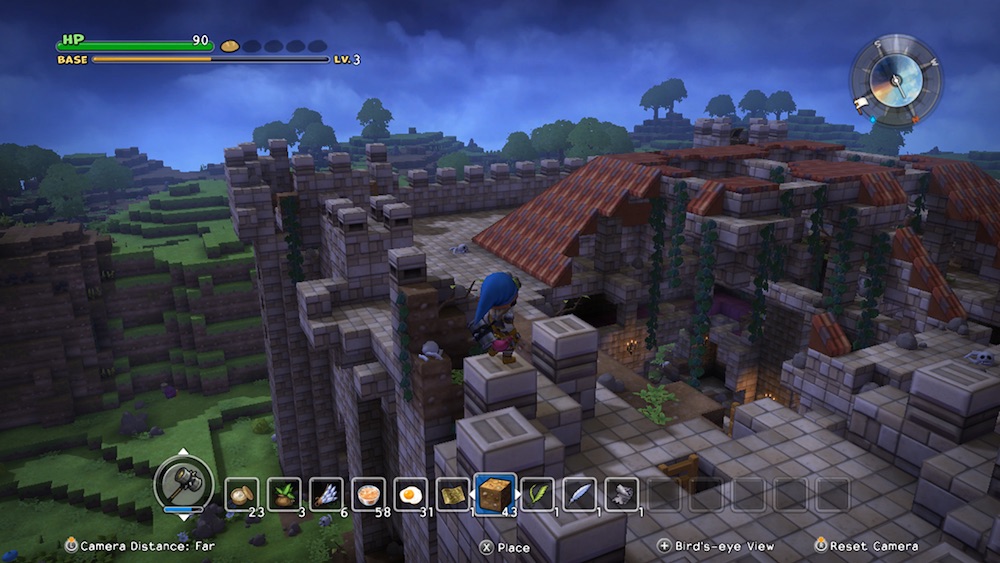
For a game with the word “builders” in the title, I was expecting DQB to be competent in this area, and, quite frankly, there’s nothing about this part I’d change. The building, selecting, and aiming controls are both sensible and intuitive. Any mistake can easily be fixed, and, for the first time in a game like this, I had blueprints to work off. Some quests may require a room with specific items to complete the request, but others offer a usable blueprint that can be physically moved around and placed on the floor where you want to build. For someone like me that swings between forgetting to leave space for a door to making that huge one-room house the first time you play The Sims that spends your whole 20k, this is cool. It’s just a shame you can’t create and share blueprints with other players to experiment with in free-play. You can randomly summon other players’ plots and share your own, but it’s quite limited.
For anyone who plays unmodded crafting, mining, building or similar games, one of the most significant issues has always been pack size. The number of items you can access and carry while out doing your thing has often been such a hindrance – I’ve lost track of the number of times I found something excellent light years from my base and had to decide what to leave behind to carry my discovery. DQB has you build a unique item as part of an early quest that looks like a giant chest, and honestly, when explained, I thought it just had triple storage capacity. However, once you have one, if you’re out saving the world or stealing the walls from a house, when your item pack is full everything else magically gets sent to the chest at home! What could be better than that? Oh, I know, THE ABILITY TO ACCESS ANY ITEM YOU HAVE STORED REGARDLESS OF WHERE YOU ARE OR WHAT YOU’RE DOING. It made random treasure hoards or unexpected missions that much better because the need to travel back and forth for a single item disappeared. It may sound like a minor feature, but it truly had a profound impact on my enjoyment of the game.
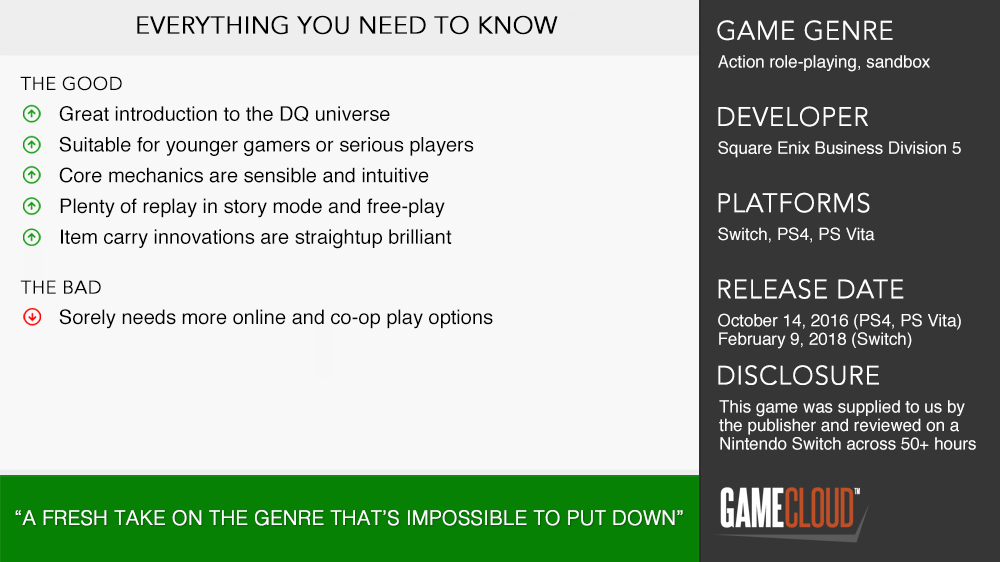
I’m not exaggerating when I say there’s nothing I didn’t enjoy about Dragon Quest Builders. It’s bright, colourful, heartfelt yet dark, intuitive, lots of fun, and it made me want to beat the crap out of the bad guy. My own bias for a series I’d never gotten into nearly made me miss out on this, and, in hindsight, I’m so glad now I put in the time. There’s plenty of replay value to be found here, both in the story mode and free-play, and the portability of the Switch makes DQB an ideal travel companion. One thing I would like to see, however, only because I’ve now lost the game to my son who built “a nice outdoor setting to watch his minions cook for him,” is the ability for local multiplayer. It’s the one thing the game is sorely lacking, so now I’m eagerly holding out for the sequel.











